
All categories
Featured selections
Trade Assurance
Buyer Central
Help Center
Get the app
Become a supplier

(1191 products available)










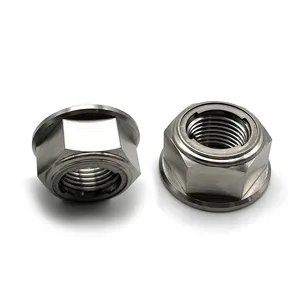



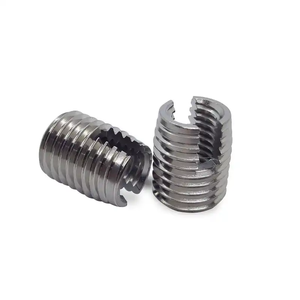








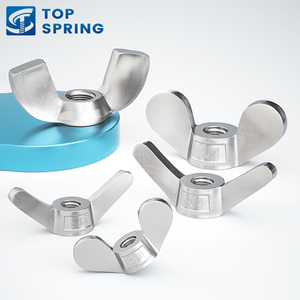





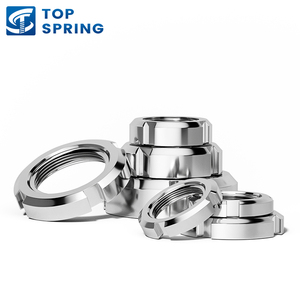


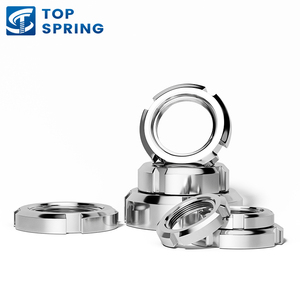


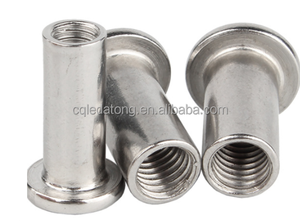
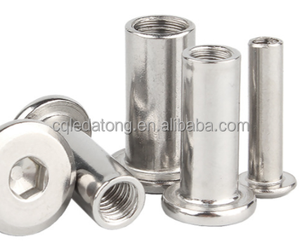
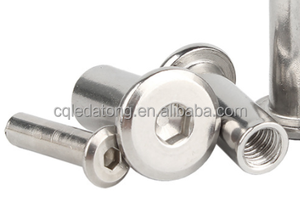

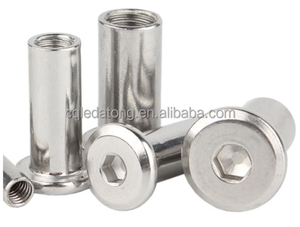












Sleeve nuts m3 come in different types. These nuts serve various functions in equipment, construction, and automotive applications.
Some common types include:
Solid sleeve nuts
These are manufactured using a single piece of solid material. Usually, they are steel or aluminum alloy. This material promotes great strength and durability. These sleeve nuts are often used when high loads or stresses are expected in a certain application. This is because of their toughness. Common applications for solid M3 nuts and bolts include heavy machinery, automotive components, and structural assemblies.
Split sleeve nuts
These have a split along their length. It allows some flexibility when being fitted onto shafts or rods. This split enables the sleeve nut to be adjusted or tightened securely with ease. It is ideal for uneven or vibrating surfaces. Many are in power transmission systems such as pulleys and gears.
Collar sleeve nuts
These have an extended lip or collar on one end. This feature offers additional security by providing a bearing surface that reduces wear. Additionally, this design adds a locking function that is suitable for maintenance. Commonly, collar sleeve nuts are seen in wheel assemblies, conveyor belts, and heavy-duty machinery where regular checks are made.
Locking sleeve nuts
Also referred to as torque washer nuts, locking sleeve nuts have grooves, ridges, or threads that help prevent undesired loosening because of vibration or torque fluctuations. This locking mechanism makes them suitable for the most critical applications requiring high safety standards. Such applications include aerospace components, suspension systems, and safety riggings.
Adjustable sleeve nuts
These have slots or teeth that allow adjustments adjust tool for varying distances or easy fitting. These locking nuts permit alignment fine-tuning. They are widely used in equipment with movable parts adjusting to frequent changes, like telescoping mechanisms, scaffolding systems, and hydraulic lifts.
M3 and M4 screw specifications operate similarly since they share common features. However, the earlier have a slightly larger diameter. For buyers looking for commercially viable products, quality nuts have identifiable properties. These include tensile strength and hardness.
Recently, sleeve nut demand has increased due to expanding automotive, aerospace, and construction industries. Sleeve nuts, which are easy to install and adjust, enable quick assembly and disassembly of components that require frequent maintenance.
Also, the trend of using lightweight materials in the manufacturing of machinery and construction equipment increases the demand for these nuts as they are essential in providing secure fastenings.
On the other hand, factors like rising raw material costs and the growing adoption of alternative fastening solutions, such as adhesives, can pose challenges for sleeve nut businesses. These factors reduce their profit margins and hinder their growth.
English M3 set screws are produced using different grades of steel. Each grade has varying degrees of tensile strength, corrosion resistance, and thermal properties. Therefore, this leads to their wide range of applications. Moreover, some set screw grades include alloy steel, stainless steel, and carbon steel. Some grade variants include 8.8, 10.9, and 12.9.
When selecting sleeve nuts for a certain application, buyers should consider properties like:
The M3 screw pitch is 0.5 mm and has a diameter of 3 mm. These screws are also part of the metric screw system. In this system, specifications include diameter, length, and thread pitch. On the other hand, the maintenance of sleeve nuts largely extends their operational life and reliability while enhancing their performance.
Further, some maintenance tips include:
Regular inspections
Often, a visual inspection of sleeve nuts is needed to check for signs of wear, corrosion, or damage. These signs include deformation, cracks, and looseness. Early identification of such issues allows timely replacement or repair to prevent further damage to connected parts.
Lubrication:
Applying the right lubricant to the threads and bearing surfaces of sleeve nuts reduces friction and wear. Further, lubrication helps prevent rust, particularly in nuts exposed to moisture. Buyers should always check the manufacturer’s recommendations for the right lubricant to use, as certain materials have compatible lubes.
Tightening and torque maintenance:
They ensure that sleeve nuts remain properly torqued according to the manufacturer’s specifications. This step helps maintain the integrity of the assembly. Undersized or overtightened nuts lead to wear and damage, thus compromising the assembly’s safety and functionality.
Cleaning:
Debris, dirt, or other contaminants can accumulate on sleeve nuts and interfere with their functioning. Thus, cleaning them with a brush or cloth helps maintain their operational efficiency. Buyers should also clean nuts before application, especially in a dirty environment.
Protective coatings:
Using protective coating on sleeve nuts can enhance their lifespan, particularly in corrosive environments. Some coatings to consider include zinc plating, anodizing, or powder coating. These coatings provide an additional corrosion barrier while retaining mechanical properties of the nuts.
Machinery and equipment assembly
These nuts create adjustable and secure connections that facilitate the assembly and disassembly of components in complex machinery. Besides, they help maintain precision and alignment in systems that need frequent maintenance.
Automotive applications
Usually, sleeve nuts are used in suspension systems, wheels, and drivetrain components. These are areas where fluctuations in torque and vibration are common. In these areas, locking and collar sleeve nuts are particularly essential in keeping parts in place while minimizing wear and tear.
Aerospace engineering
Adjustable sleeve nuts ensure that critical components such as engines, landing gear, and control systems have secure yet easily maintainable fastenings. Further, their lightweight and high-strength properties make them ideal fasteners for aerospace applications.
Construction equipment
Often, the durability and adjustability of sleeve nuts make them essential components in heavy construction machinery, including excavators, bulldozers, and cranes. These machines experience extreme loads and demanding working conditions. Hence, it is important to have fasteners that are reliable and long-lasting.
Renewable energy systems
Included here are wind turbines and solar panel installations. These nuts are used in structures and mechanical systems alike. Generally, they help withstand outdoor elements and provide easy maintenance access to worn-out parts in these energy-generating systems.
Robotics and automation
These nuts enable precise assembly and adjustment of components in robotic systems. These include sensors, arms, and joints. Further, as robotic technology advances, the demand for fasteners that allow fine-tuning and ensure high precision will increase.
Industrial and safety rigging
These locking sleeve nuts are crucial in rigging and safety equipment. They are also used in lifting devices, scaffolding, and safety harnesses. Normally, they prevent loosening from vibration, thus securing reliable operations in high-risk environments.
Furniture and interior design
Adjustable and easily removable sleeve nuts are increasingly being used in modular furniture systems, especially for quick assembly, disassembly, and adjustment in tables, chairs, and cabinetry. They have become a popular choice for easy design customization.
They are manufactured from various materials depending on the specific requirements of the application at hand. Common metals include alloy steel, stainless steel, carbon steel, brass, and polyurethane. Each material has unique benefits such as improved corrosion resistance, increased tensile strength, and enhanced durability.
Locking sleeve nuts are designed with specific features that enable them to maintain their integrity in critical applications. Normally, these nuts have grooves, notches, or ridges that create mechanical friction. This friction helps prevent unwanted loosening caused by vibrations or torque fluctuations.
Maintenance tips usually involve regular inspection, lubrication, tightening maintenance, cleaning, and protective coating. This maintenance aims to identify wear or damage early on, reduce corrosion, maintain torque integrity, remove contaminants, and add protective barriers to extend the nuts’ lifespan and enhance operational efficiency.
In automotive, sleeve nuts are used in suspension systems, wheels, and drivetrain components. Normally, these areas have fluctuations in torque and vibration. Therefore, locking and collar sleeve nuts are particularly suitable for keeping parts secure while minimizing wear and tear.
Yes, there are several ISO standards that define various aspects of these fasteners, such as dimensions, material properties, and testing methods. Some examples of these standards include ISO 6150 and ISO 898-1. These standards help ensure consistency, interoperability, and safety across global applications.